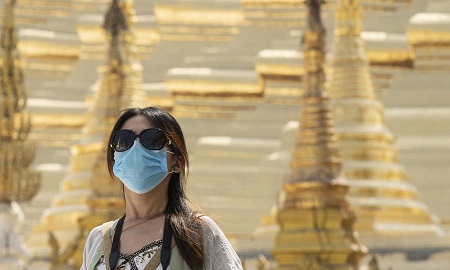Myanmar has had two new COVID-19 deaths, bringing the total to three. A 47-year-old man and a 63-year-old woman died of respiratory failure brought on by the disease, according to the Ministry of Health and Sports. Although at the time of writing Myanmar has had only 22 confirmed coronavirus cases, many fear this is only the first stage of a much larger epidemic. The government, however, has struggled to find a definite COVID-19 strategy, caught between containing the spread of the disease while minimizing its economic damage.
In a televised speech, State Counsellor Daw Aung San Suu Kyi assured the public that localized lockdowns or a blanket stay-at-home order would be issued only if absolutely necessary. Nevertheless, the city of Mandalay plans to restrict the entry and exit of vehicles for the Thingyan season, and other local governments have issued their own travel restrictions. However, public backlash forced the Kayah State and Sagaing Region governments to cancel strict travel restrictions one day after issuing them. “The previous order was causing a controversy among residents. It could have created a difficult situation for residents if they had to observe recommendations from township officials every time they have to travel… This is the main reason that the regional government decided to revise it,” U Aung Myo, a lawmaker from Sagaing, told the Irrawaddy.
Along the border, the government closed nine land crossings in order to prevent tourists from China, India and Thailand from carrying in the disease. However, several of these crossings are also frequented by migrant workers, especially in Myawaddy, on the border with Thailand. Two weeks ago, a mass push from thousands of Myanmar migrants working in Thailand forced authorities to temporarily re-open the border, and the panic ultimately resulted in caravans of thousands of people traveling across the country.
On the public health side, the Ministry of Health and Sports and local hospitals are facing a lack of trained staff and equipment needed to track, and ultimately contain, the spread of the disease. A study from the Centre for Mathematical Modeling of Infectious Diseases suggests that the vast majority of cases in neighboring Indonesia have gone unreported. Some fear that, by the same token, Myanmar’s actual number of COVID-19 patients could be much higher than currently reported. To fill the data gap, the United Nations is working to supply Myanmar with 50,000 additional testing kits, Mizzima News reported. Whether the government can improve both its medical resources and logistical strategy may indeed determine the course of the coronavirus in Myanmar.


